The Detroit Pistons are in an enviable spot (imagine saying that a couple of years ago?).
Their former #1 overall pick, Cade Cunningham, blossomed into a top-15 player in the league (and he’s aiming higher than that). Ausar Thompson is one of the league’s most promising juniors. Jaden Ivey shot 41% from deep last year, and Isaiah Stewart emerged as maybe the league’s best defensive backup big.
[Editor’s note: I’m planning on running a mailbag in the next week or two, something I haven’t done in a couple of years, so make sure to comment or email me at mike@basketballpoetry.com with any burning current NBA questions!]
Ron Holland already gives opposing ballhandlers daymares and showed promising offensive progress at Summer League. Caris LeVert and Tobias Harris are productive, reliable veterans, and Duncan Robinson can replace Malik Beasley’s shooting (assuming Beasley doesn’t return to the team to form a sharpshooting duo).
But behind Cunningham, none of those players are as crucial to their team’s success next season as their rising fourth-year center, Jalen Duren. He brings a lot of questions, and his answers this season may well determine Detroit’s ceiling — and his future with the team.
You see, the Pistons are here. Fresh off a hard-fought 4-2 playoff loss to the Knicks that was closer than the final score might indicate, and with a young and improving core surrounding a bona fide star in Cunningham, they fully expect to compete for home-court advantage in this year’s playoffs. Cleveland and New York are pegged to finish first and second in the conference, but despite high-profile additions to Atlanta and Orlando’s lineups, there are no other teams that dramatically outclass Motor City.
The roster is filled with talented (if flawed) players, and there are enough forwards and guards that I’m confident someone(s) will pop. The team’s starting center, on the other hand, may not even be a net positive player yet!
Jalen Duren looks like a throwback to the 1990s, all bursting biceps and smashing shoulders. Standing 6’11” with a nearly 7’6” wingspan, he’s got the ideal build for today’s NBA.
He also has an ideal shot chart for the modern rim-runner. It isn’t so much a chart as it is a basket-sized blob:
Duren was second in the league in FG% (behind Jarrett Allen), and dunked a higher share of field goal attempts (44%) than anyone except Rudy Gobert. He cut all the fat off of his scoring game, becoming exclusively a roll man and putback artist. Here is what nearly all of his used possessions look like:
Honestly, such streamlining might’ve been a detriment to Duren’s growth. He is in desperate need of an Ivica Zubac-style floater, something to expand his maximum range from two feet to eight feet. Every once in the rarest of whiles, he’ll pull it out:
Something like that needs to rear its head more often, even if Duren’s not a 45% floater-er. Just having a counter to rolling and hand-offing would improve his offense dramatically, because those parts are already pretty good! Duren’s kangaroo athleticism and soft hands make him a lob-eating monster:
Duren’s hands help make him a beast on the boards, too, where he’s been a consistently excellent rebounder on both sides. His ability to generate second chances for himself and others is an essential part of his offensive value, particularly for a team that often struggled to score in the halfcourt.
Leaning into Duren’s passing, by far his most underappreciated skill, could be another way to juice Detroit’s halfcourt offense. Coach JB Bickerstaff’s systems have always maximized the counting stats of the guards at the expense of big men, as a look at Cleveland’s roster over the last few years can attest. That’s not an obviously bad thing — Cunningham should have the ball as much as possible — but it is a choice. I wonder if it’s leaving meat on the drumstick. Duren’s no Domantas Sabonis, but could he reach, say, Alperen Sengun levels of passing (minus the flair)? He’s a quick processor while the ball is airborne — even when his body is, too:
To Bickerstaff’s credit, he did feature Duren more as a playmaking hub toward the end of the season, as Duren’s touches, points, and assists all increased in the early part of 2025. That trend continued in the playoffs (where only fouls limited Duren’s playing time). I’ll be watching to see how much that sticks in 2025-26.
To be featured more on offense, however, Duren must improve his screening. He’s slowly adding the craft all successful big men have, the bent elbows, wide knees, and slight hip twists that can be the difference in springing a teammate open. Unfortunately, he’s still inconsistent in this area. It’s subtle, but look at how he misses the angle on this screen, letting Toumani Camara easily recover back onto Cunningham to force the miss:
That’s the kind of stuff that Duren can and should tighten up with repetitions and experience (which will also curtail the significant number of illegal picks he’s called for). Unlike many bad screeners, he’s certainly not afraid of the contact! He’s simply learning the nuances. Screening is arguably the most important offensive skill for non-superstar centers, and improvement is critical to maximizing the team’s potential.
Of course, defense is a center’s most important skill. Unfortunately, it’s Duren’s least developed.
For someone quick to read the floor while passing, he’s surprisingly slow to diagnose what opposing offenses are doing. Duren prefers drop coverage, and he’s almost comically unwilling to come out to the three-point line. Detroit reporter
pointed out that of Karl-Anthony Towns’ 12 made three-pointers in the Pistons/Knicks series, nine were because Duren flat-out refused to close out properly on the sharpshooting big man. Sometimes, it felt like he didn’t even remember who his mark was, like here, where he points for someone else to pick up Towns before realizing his mistake:Duren goes through odd periods of inactivity (a less charitable person might call it laziness) and inattentiveness, two things that make it very difficult to be the defensive anchor the Pistons need. He’s also still too jumpy, chasing blocks and committing bad fouls.
There is good news. Duren knows what people think about him. In early February, he had this to say about his play:
"I think it's pretty obvious I started the season slow, on some soft sh*t ... I had to hold myself accountable and knowing how I can impact the game and do it every single night."
If Duren was bad last season, he was still so much better than in his second season, when he was one of the league’s worst-defending big men. As he said above, he started slowly but improved as his third year went along, perhaps due to Bickerstaff’s tutelage and perhaps due to the increasing role of Ausar Thompson.
Thompson is one of the league’s apex defenders — I picked his brother as my Defensive Player of the Year last year while acknowledging that Ausar might be even better. The on/off defensive numbers with Thompson and Duren are startling: In roughly the same number of possessions, the Pistons had a defensive rating of 118.4 with Duren on and Thompson off, but only 111.7 with Duren and Thompson playing together. That’s almost exactly the difference between Philadelphia’s 26th-ranked defense and Minnesota’s sixth-ranked unit.
The defensive duo posted a minuscule 104.1 defensive rating in a couple of hundred playoff possessions, too! When Duren wasn’t busy leaving KAT wide-open, he was successfully wrestling with Mitchell Robinson (one of the strongest players in the league) or roaming off of Josh Hart to muck up the paint and scare away drivers. Overall, his defense was rather solid in the playoffs. Was that just a temporary glimmer, or proof of concept for what he can do when fully engaged?
There’s still a question of whether Thompson and Duren are the best fit together, as neither possesses anything that could even pretend to be a jump shot. The Pistons did score at above-average rates when the two shared the floor in the regular season, but that offense fell apart in six playoff games (partially due to bad shooting from outside).
Cunningham is priority number one, but Thompson is likely the second most valuable Piston, and there’s little chance of him becoming a perimeter threat anytime soon. Detroit will be more likely to build around Thompson’s limitations than Duren’s.
Which leaves us at an interesting place. Duren is an undeniably talented player, already a nearly optimized offensive center with plenty of potential to become better on both ends. Despite his imposing physique, he’s somehow still just 21 years old!
It’s reasonable to expect players in their early 20s to get better, but growth isn’t guaranteed. Duren is entering the final year of his contract, and Detroit likely won’t extend him until they’ve seen what progress he’s made over the summer. If he wants to be a long-term core piece, he’ll need to make major strides, particularly on the defensive side. Otherwise, he’ll be headed for the hell that is restricted free agency, and while there will be more teams with spending power next summer, it’s pretty hard to see a big offer sheet coming for a center who doesn’t defend or stretch the floor.
Few players confuse me like Duren. The flashes he’s shown are tremendous, and grew more common as the season went on, but they remained just lightning bugs in the dark. He doesn’t need to put everything together right away, but he is at a crossroads. Proving he’s at least headed down the right path could mean a difference of tens of millions of dollars for him personally and winning a playoff series or two for the Detroit Pistons.
[Don’t forget to leave a question about any current NBA topic in the comments or to mike@basketballpoetry.com!]


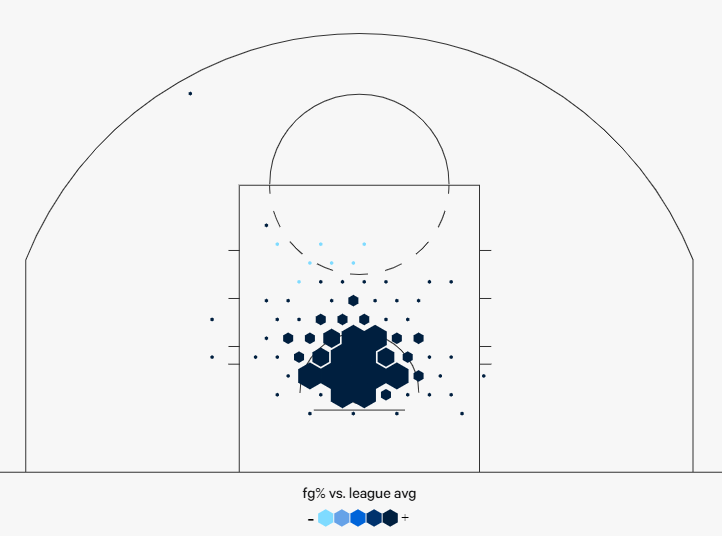
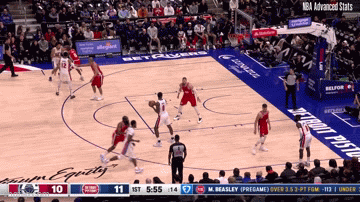
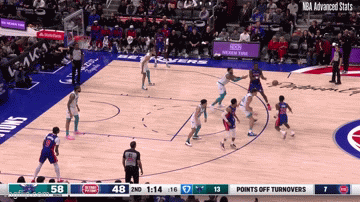
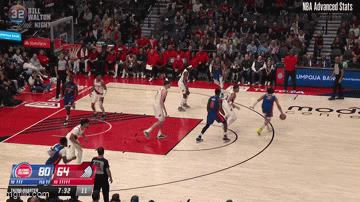
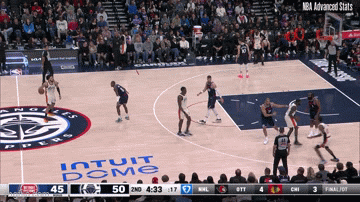
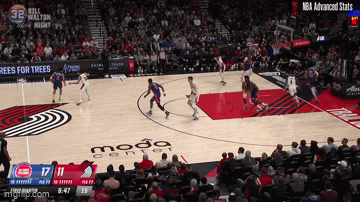
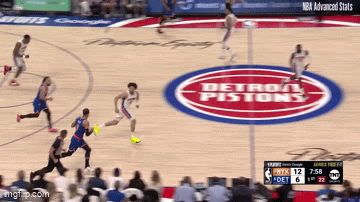
Love the level of detail you provided, especially with Duren’s pick setting. I’m curious what his synergy is with Cade, because Luka (a player Cade had fairly or not often been compared to) loves a rim runner, and I wonder how much Cade benefits from that style that Duren can bring.
For the mailbag: As a Spurs fan, I have heard lots about maximizing Wemby’s unique skill set. In your opinion, what would the optimal offense (motion, five out, more fast break etc.) and defense (drop, more switching etc.) look like for a Wemby team as the Spurs continue to hold their young core?
Their core three being an average age of 22 is remarkable and looking really nice especially with the condition the East is in.
Duren is perplexing because you’re right, the flashes are… wow. He’s a freak athlete big that could be a defensive monster with some IQ and instincts — which you pointed out he possesses on offense.